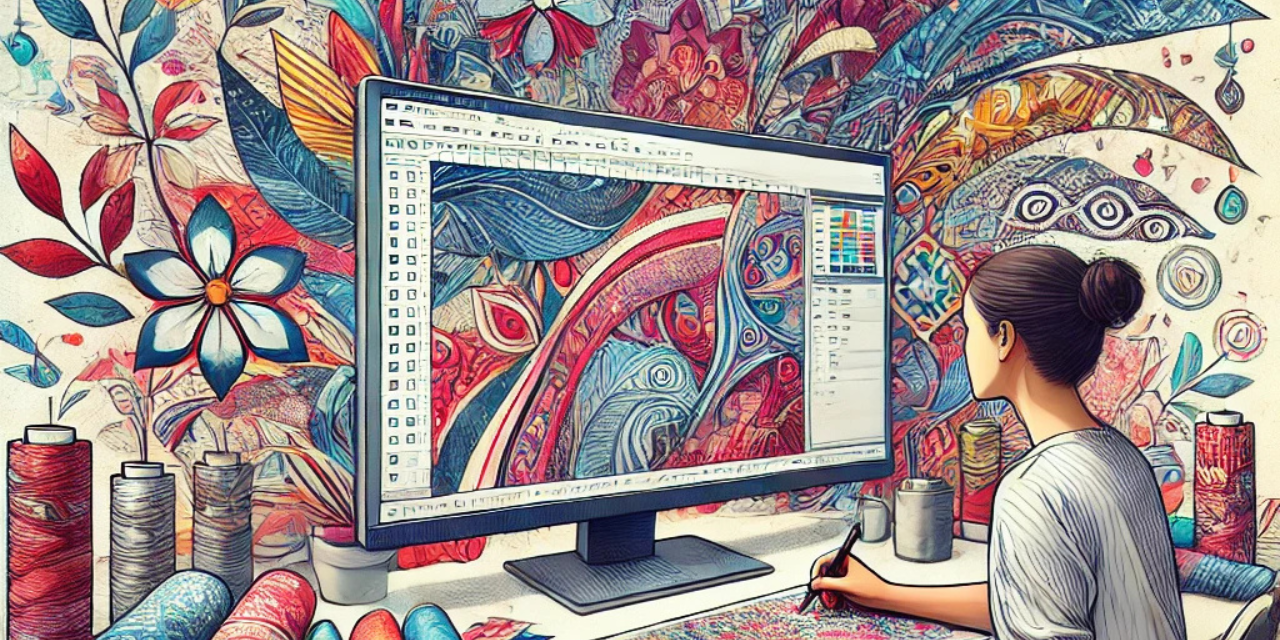Scalability and accuracy are vital in textile design. Whether creating patterns for house decor, upholstery, or fashion, having a format that keeps quality at any size is indispensable. CDR files, CorelDRAW’s original format, become relevant here. Seamless scalability is guaranteed with these vector-based files; hence, designs stay sharp and crisp, whether printed on a large canvas roll or a little handkerchief.
One typical problem with textile design is file conversion. For various production requirements, designers sometimes have to convert their CDR files into other formats like AI, EPS, SVG, or even raster formats like PNG and JPEG. As such, you can try this conversion site, Pngtocdr, to convert your file to the format you want, such as PNG to CDR. Knowledge of effectively optimizing and exporting CDR files guarantees that the finished textile product conforms to industry standards without sacrificing design integrity.
Covering fundamental skills, top methods, and how to prevent typical mistakes, this guide will lead you through the process of generating scalable textile designs from CDR files using CDR files.
Understanding vector-based design for textiles.
Raster graphics are pixel-dependent and lose quality when resized, but vector graphics define shapes, lines, and colors using mathematical equations. These are perfect for textile design, where exactness and scalability are required. Using CorelDRAW’s strong vector tools, designers can produce complex patterns that remain sharp across different scales.
Primary advantages of using vector-based CDR files for textile design:
- Unlimited flexibility: Quality is maintained without regard to scale.
- Flexible color control: You can quickly change colors to suit several fabric types.
- Seamless pattern repetition: Produce constant, perfect repeats necessary for textile printing.
- Lightweight file size: Vector files have much smaller file sizes, making them easier to share and store than high-resolution raster images.
Creating in CorelDRAW a continuous pattern
A good seamless pattern guarantees the design repeats infinitely without obvious breaks. In CorelDRAW, please find an example of how you may make one:
Begin from a ground plan.
Start with a rough drawing or digital representation of your motif. Consider abstract patterns, geometric forms, or floral elements depending on the fabric’s intended use.
Access the PowerClip capability.
The PowerClip tool of CorelDRAW lets you position elements inside a particular shape, hence improving organized patterns.
Apply the docker transformations.
Use the transformations Docker to copy and arrange your patterns exactly throughout; therefore, they will match exactly.
Seek for smoothness.
To check if the pattern tiles accurately reflect your words:
- Repeat your design many times.
- Put the copies in a grid together.
- Zoom in and look for disparities or gaps.
Optimization of CDR files for various textile printing methods
Several things need to be taken into account for different print techniques. This is how you can adjust your CDR images for different textile printing methods:
Digital printing
- Use high-resolution exports (300 DPI if rasterized).
- Depending on the printer, guaranteed color accuracy is achieved with either CMYK or RGB settings.
- Change the text into outlines to stop any font problems.
Screen printing method.
- Limit the color palette to match the number of screens available.
- For more accurate reproduction, go with vector-based solid colors over gradients.
- Divide the colors into distinct layers for simple handling.
Sublimation printing.
- As sublimation ink permeates the fabric, create patterns with sharp, brilliant colors.
- Remember that this technique works only on polyester fabrics.
Adaptation through embroidery.
- Change complicated shapes into simplified vector forms.
- Clear embroidery stitching would benefit from thicker stroke weights.
- Ensure the minimum stitch width is compatible with embroidery machines.
Perfecting CDR files for scalable textile patterns offers designers a competitive advantage. Vector-based accuracy, seamless pattern development, and optimized exports help ensure that designs remain consistent across many platforms.
Knowing how to produce, optimize, and convert CDR files effectively means you can generate top-tier, flexible textile designs that meet industry standards. CorelDRAW has all the features you need to turn your textile ideas into reality, whether using digital, screen, or sublimation printing. Experiment with designs, get imaginative and bring your textile design talents to the next level.

